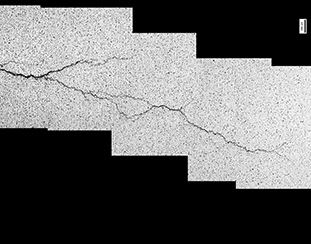|
Stress Corrosion Cracking – What Factors Cause and Prevent It?
What is Stress Corrosion Cracking (SCC)?
Stress corrosion cracking (SCC) is the propagation of often branched cracks in a material within a corrosive environment, potentially leading to the catastrophic failure of a component/structure, as the cracking appears brittle. This form of corrosion can occur as either intergranular stress corrosion cracking (IGSCC) or as transgranular stress corrosion cracking (TGSCC):
Intergranular Stress Corrosion Cracking (IGSCC) – is where the fracture (crack) forms along the grain boundaries of a material.
Transgranular Stress Corrosion Cracking (TGSCC) – is where the fracture (crack) forms through the grains of a material (and not along the boundaries).
 What Causes Stress Corrosion Cracking (SCC)?
What Causes Stress Corrosion Cracking (SCC)?
There are three main factors that work in combination to affect and cause the stress corrosion cracking of a material. These include:
Material
Stress corrosion cracking can be caused by the type of material being used. This is because different materials are more/less susceptible to stress corrosion cracking than others. Poor material selection can lead to stress corrosion cracking due to the material being susceptible to SCC in the corrosive environment that it is operating in.
Environment
The service environment that the material is operating within can contain chemical species which cause stress corrosion cracking to occur in different materials. As a result, material and environment selection should be considered together to avoid stress corrosion cracking.
Tensile Stress
This involves a material experiencing stress or strain from either residual stress or the direct application of stress or pressure. In the case of stress corrosion cracking, crack propagation is caused by mostly static stress. In order for the crack to be regarded as a stress corrosion crack there needs to be the presence of factors relating to materials and environment too.
How to Prevent Stress Corrosion Cracking (SCC)
Material
One of the main prevention methods involves using a non-susceptible material. This is an important way of controlling SCC as it prevents this form of corrosion from occurring in the service environment that the material is operating in. However, this prevention method is not always an option and so it may be more applicable to control the service environment that the material is required to operate in.
Environment
Another preventive method involves the mitigation of the service environment by removing, limiting or replacing the relevant corrosive chemical species. This prevents stress corrosion cracking from occurring. However, this can be a very difficult factor to control if corrosive species are naturally present in the environment where the material is located, for example austenitic stainless steels in seawater.
Other methods of prevention include controlling the temperature to ensure that it does not exceed a certain temperature, including fluctuations.
Stress/Strain
Removing or reducing the tensile stress placed on a component is another way of preventing the occurrence of stress corrosion cracking. One of the main downsides of this preventative method is that it can be difficult to control the stress that a material experiences at regions where stress can concentrate during fabrication or operation.
TWI and Stress Corrosion Cracking
Stress Corrosion Cracking is applicable within different industries and TWI Ltd has extensive experience with stress corrosion cracking, including its detection and prevention:
TWI investigated the weld overlay cladding used to protect stainless steel in pipelines and pressure vessels against corrosive fluids.
TWI launched a joint industry project looking at intergranular stress corrosion cracking. It looked at the understanding and avoidance of this type of stress corrosion cracking within supermartensitic stainless steels used in oil and gas production.
A TWI core research programme looked at atmospheric induced stress corrosion cracking in welded stainless steels. The research programme looked at the exposure of welded austenitic stainless steel structures to airborne salt particles.
A testing programme was conducted on wrought aluminium-magnesium alloys to understand their susceptibility to stress corrosion cracking.
The ripple load test is a new method developed to assess the cracking of corrosion resistant alloys.
A joint industry project was initiated to understand the conditions under which stainless steels can experience hydrogen-induced stress corrosion cracking (HISC).
TWI was contracted to perform an operational review of the likelihood of chloride stress corrosion cracking in duplex stainless steels.
A study was undertaken to investigate how welding can impact the occurrence of stress corrosion cracking on a titanium-stabilised ferritic stainless steel sheet plate. The study looked into the potential benefits of using consumables similar to the composition of the parent material.
Tests were carried out on a steam turbine in a chemical fertiliser factory to avoid further stress corrosion cracking.
Membership of The Welding Institute
As a Member of The Welding Institute, we can offer you support with our resources regarding different engineering topics. This includes access to technical knowledge on stress corrosion cracking and allied topics. Other membership benefits include:
- Access to the TWI library and e-library
- Access to Technical Group Meetings
- Discount on TWI Training and Examination courses
Click here to view to view all professional membership benefits.
